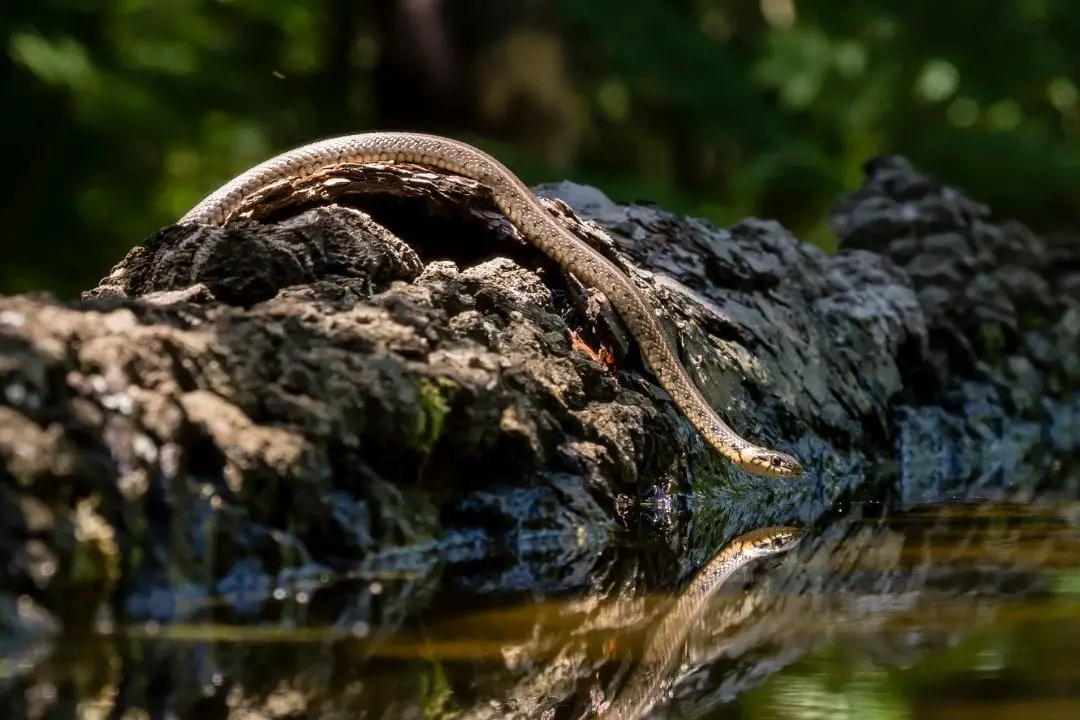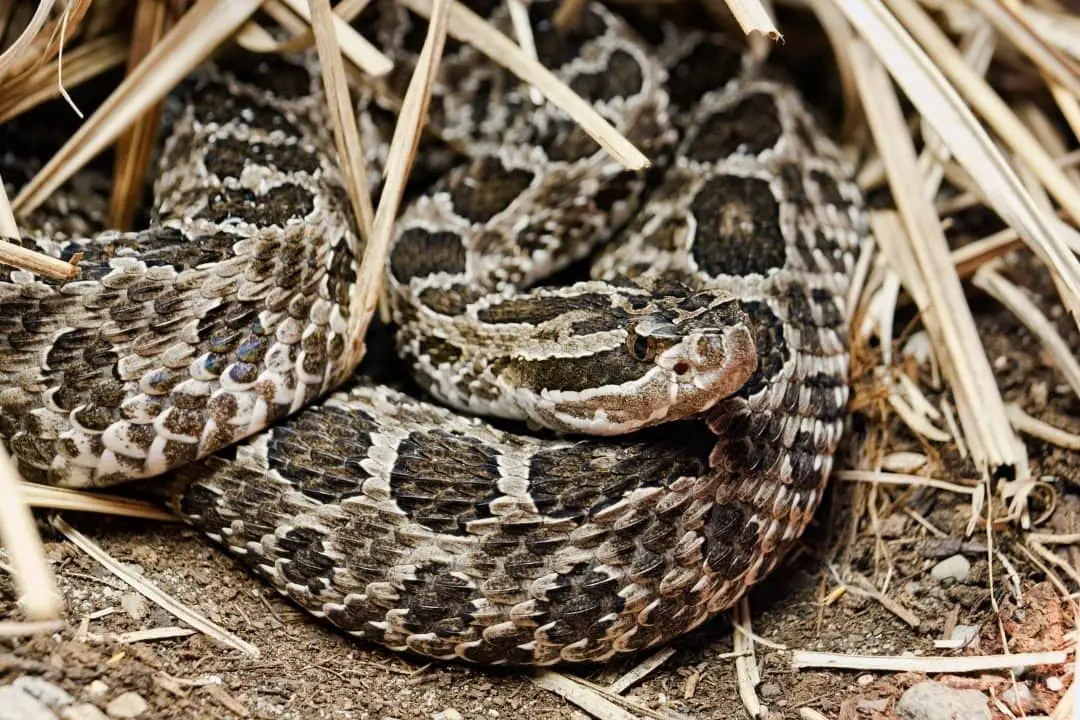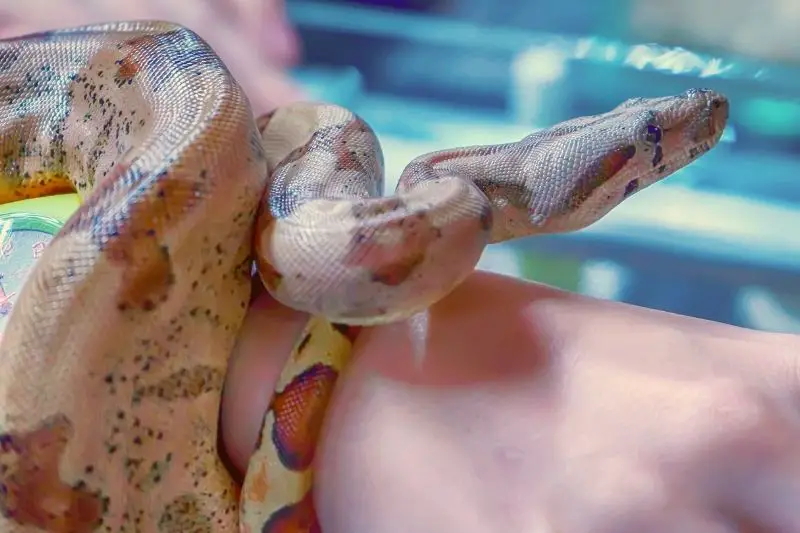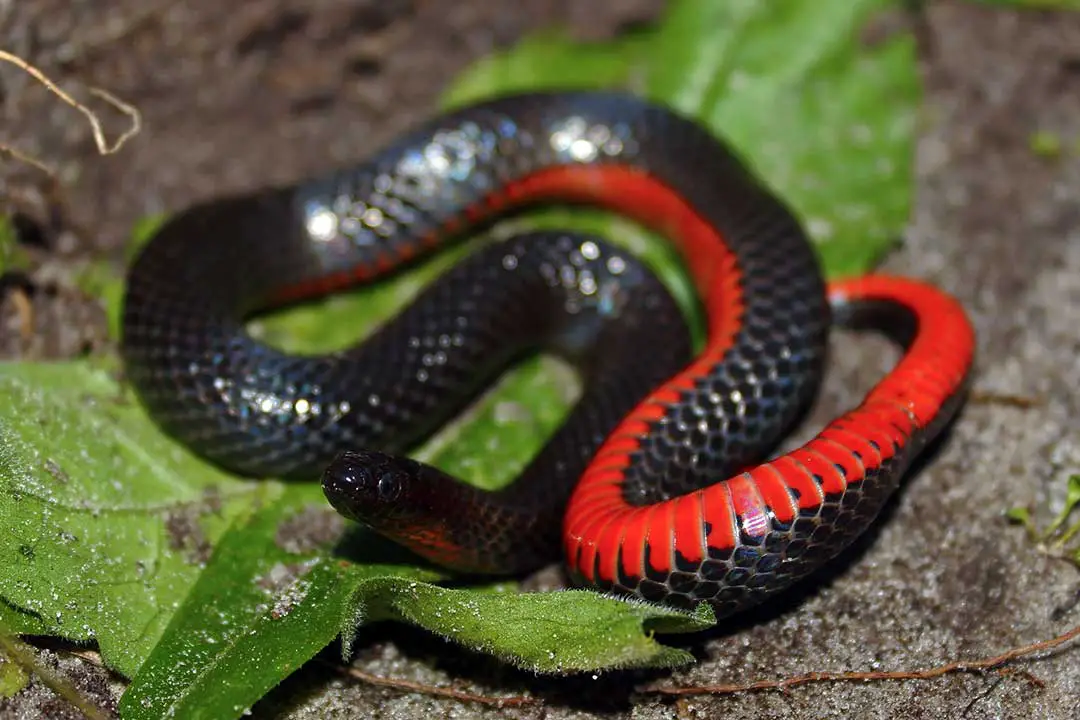Running across an unknown snake in the water can be a frightening experience. The most famous water snake in Texas is known to be venomous.
However, not all snakes that you encounter in or near water are dangerous to humans. Even the venomous snakes just want to get away from you.
The snake is definitely more frightened of you than you are of it.
If you run across a snake in the water, the first step you take should be to freeze. Back away from the snake so it knows that it can escape. Snakes are not aggressive and will not try to pursue a human in most cases.
Once you are away, you can use this handy list to help you identify the snake you are looking at. Remember to keep a note of where you are since many species of snake are only found in parts of the state.
You may also spot some more unusual snakes in the water or nearby. Even land species need to drink and may hunt animals coming to get a drink.
Snakes can also swim and will do so if they want to cross to the other side of a body of water. This means you may see a terrestrial snake taking a swim.
1. Cottonmouth
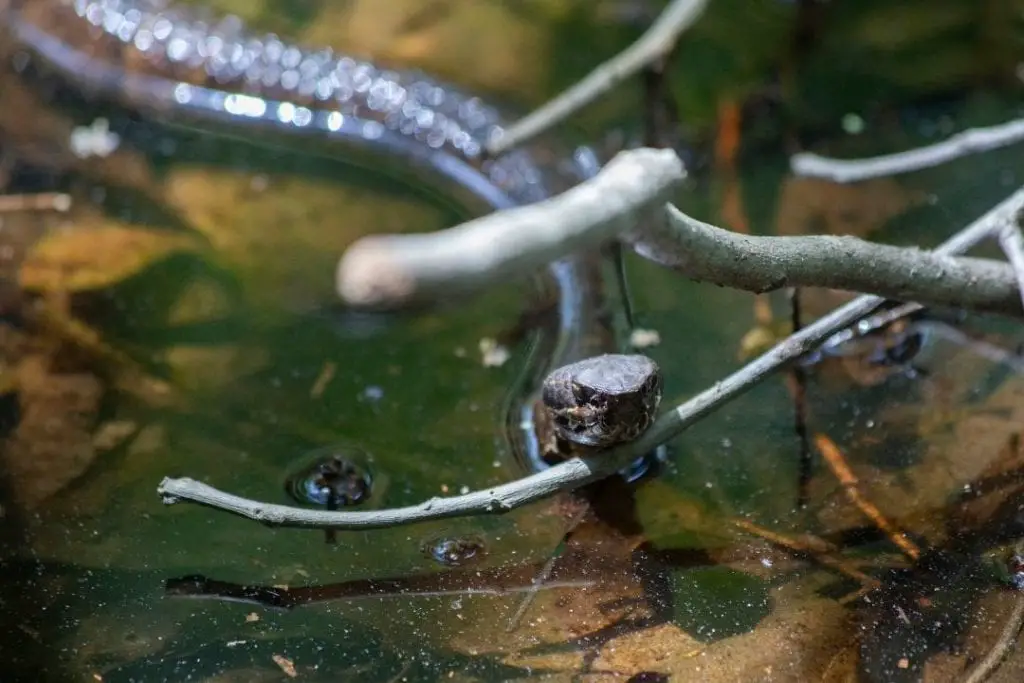
The cottonmouth or water moccasin (Agkistrodon piscivorus) is the only semi-aquatic member of the viper family.
These pit vipers can deliver fatal or even venomous bites to humans. The only subspecies found in Texas is the Western cottonmouth (A. p. leucostoma).
These snakes are not found in all of Texas. They are most common in the eastern half of the state.
They can be found around the Dallas/Fort Worth area, the southern shorelines, parts of the Hill Country, and parts of the Edwards Plateau.
Cottonmouths are named for their stark white mouths that they open during a threat display.
Adults are typically dark in color with faint markings, but young snakes have a blotchy cross banding that alternates between light and dark.
One easy way to spot them at a distance is noting their swimming style. These snakes float on the water to rest.
Whenever they are swimming, they will be mostly above the water with their heads sticking up. This can help tell them apart since most other snakes in the state do not stay so high in the water while swimming.
2. Diamondback Water Snake
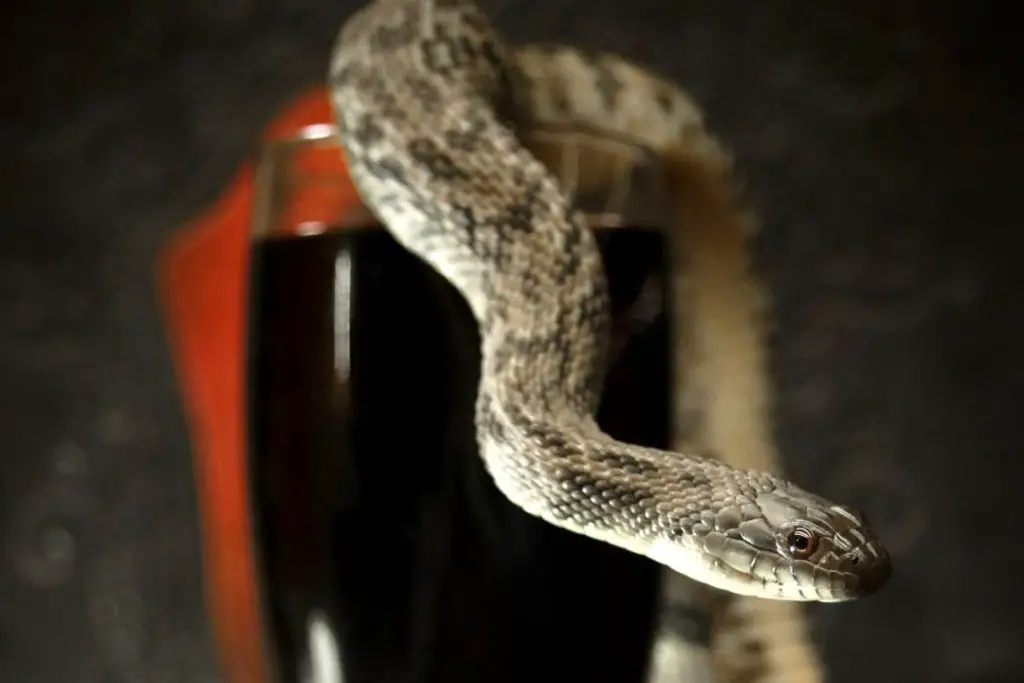
The diamondback water snake (Nerodia rhombifer) is a nonvenomous species of snake that preys primarily on fish. They tend to both hunt and bask while perched on branches above the water.
These snakes will dip their head into the water and use their sharp teeth to capture fish as they swim by.
When confronted, they will fall off the branch and swim away.
They tend to be brown or olive with dark markings on the back. Adults are typically duller with less prominent patterning than juveniles.
This species is frequently mistaken for both cottonmouths and rattlesnakes thanks to its coloring.
They are not harmful to humans aside from having a painful bite. These snakes can be told apart from the venomous snakes by their round pupils and differences in behavior.
The diamondback water snake can be found in nearly all of Texas aside from west Texas and the Panhandle.
3. Blotched Water Snake
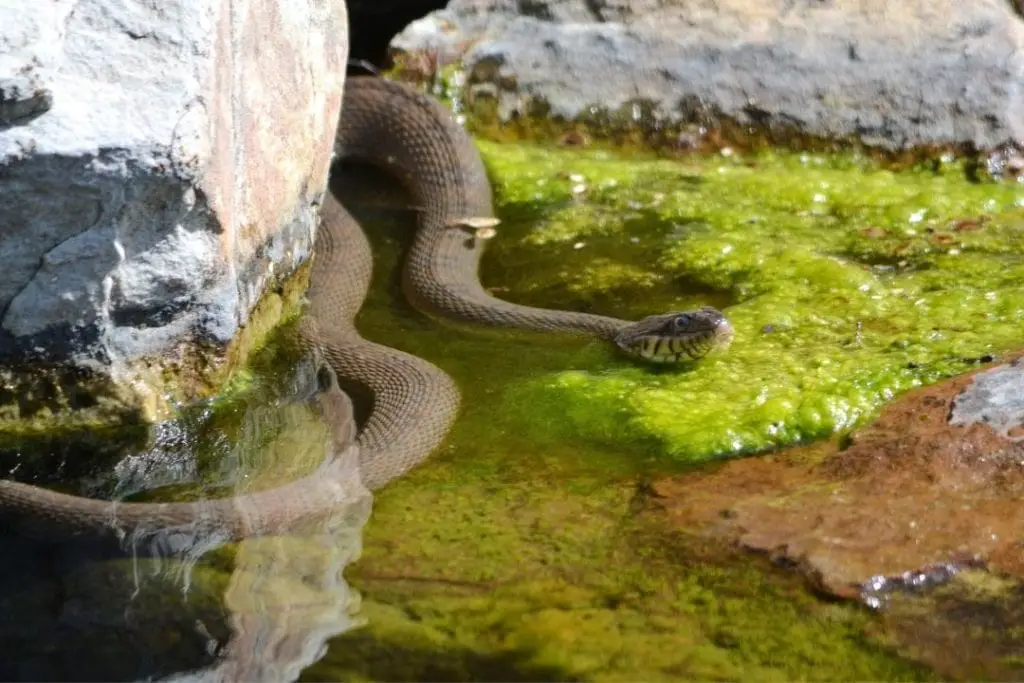
The blotched water snake (Nerodia erythrogaster transversa) is a subspecies of the plain-belly water snake. It can be found in much of Texas. As a water snake, it eats primarily fish and can be found near or in water.
This is the only one of the species that has distinct patterning as an adult. It is typically brown to olive green. It has grayish-brown blotches along the back with a yellow cross in the middle.
The face makes it easy to confuse with a cottonmouth, but they have dark lips and the head is flat.
4. Yellowbelly Water Snake
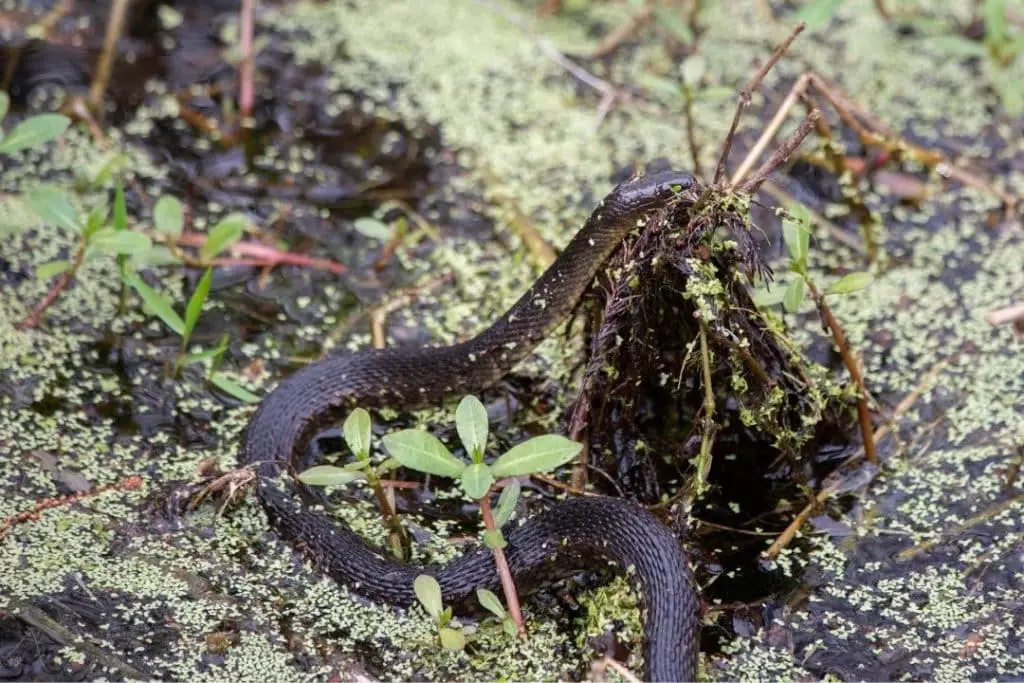
This is another subspecies of the plain-belly water snake (N. e. flavigaster) they can be found along the gulf coast.
They are mostly a solid green to black color on the back with a yellow stomach.
They are typically found near ponds and other bodies of water where they hunt fish.
5. Concho Water Snake
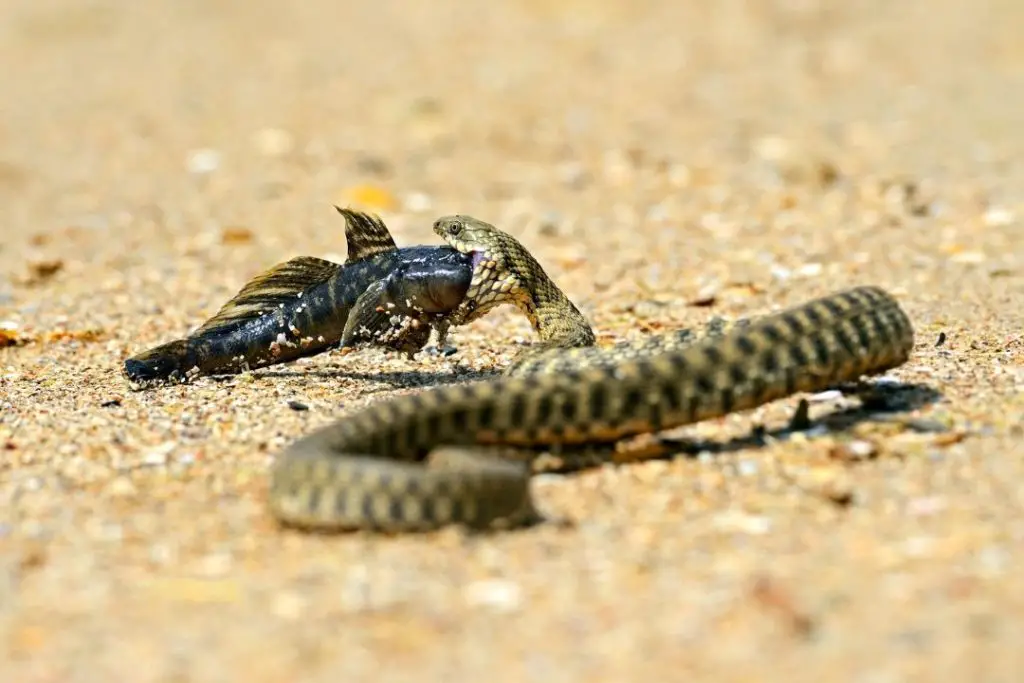
The Concho water snake (Nerodia paucimaculata) is a small snake that rarely gets over three feet long. They are currently considered near threatened due to habitat loss.
These snakes only live in small streams in the Concho and Colorado River Basins. They eat primarily fish and are only active from March to October.
They brumate for the rest of the year in burrows or other shelter. It has darkish red brown bands covering the body of the snake.
Since they need rocky streams to grow well, dam construction has destroyed much of their habitat.
6. Brazos Water Snake
This small snake is only found in the Brazos River in northern Texas.
The Brazos water snake (Nerodia harteri) is considered threatened due to habitat loss.
Like the Concho water snake, they require rocky streams to form a healthy population. These snakes are small have a checkerboard pattern that can be brown anand gray or more green in tone.
7. Southern Water Snake
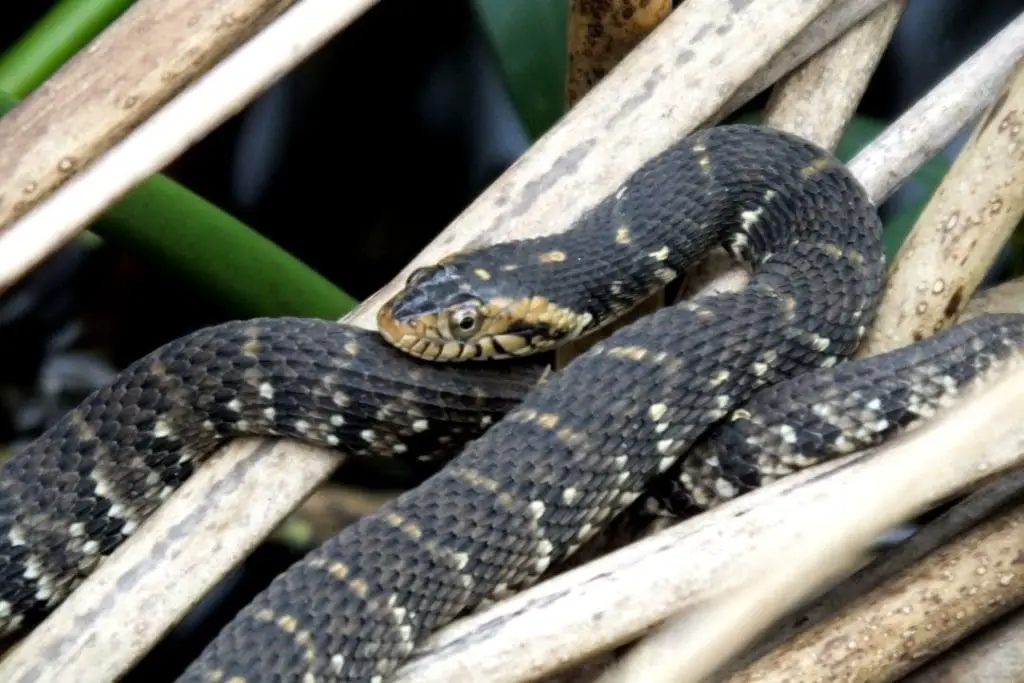
The southern water snake (Nerodia fasciata) is frequently also referred to as the broad banded water snake in eastern and southeastern Texas.
These are small fish eaters that also eat frogs and other small aquatic species.
They are normally found near water but some specimens can be found on frequently watered lawns and any area that draws in frogs and other favored prey items.
8. Western Ribbon Snake
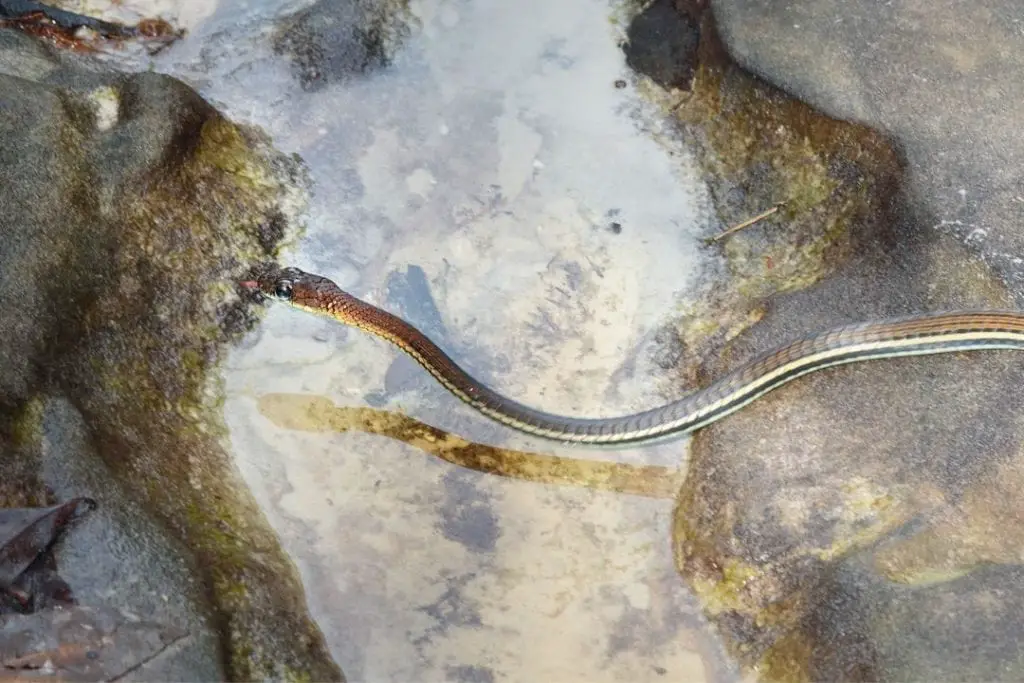
The Western ribbon snake (Thamnophis proximus) is a small snake in the same family as garter snakes.
They tend to have lateral stripes in light colors on a dark background that go down the body. the exact appearance will depend on the location of the snake.
They typically live in areas of heavy brush near bodies of water.
When disturbed, these snakes will flee into the water to escape predators. They eat mainly frogs and hunt for them by rapidly striking with the mouth closed where they suspect a frog to be located.
They do three strikes in different locations to help flush out frogs. One a frog flees, they will pursue and eat it.
9. Green Water Snake
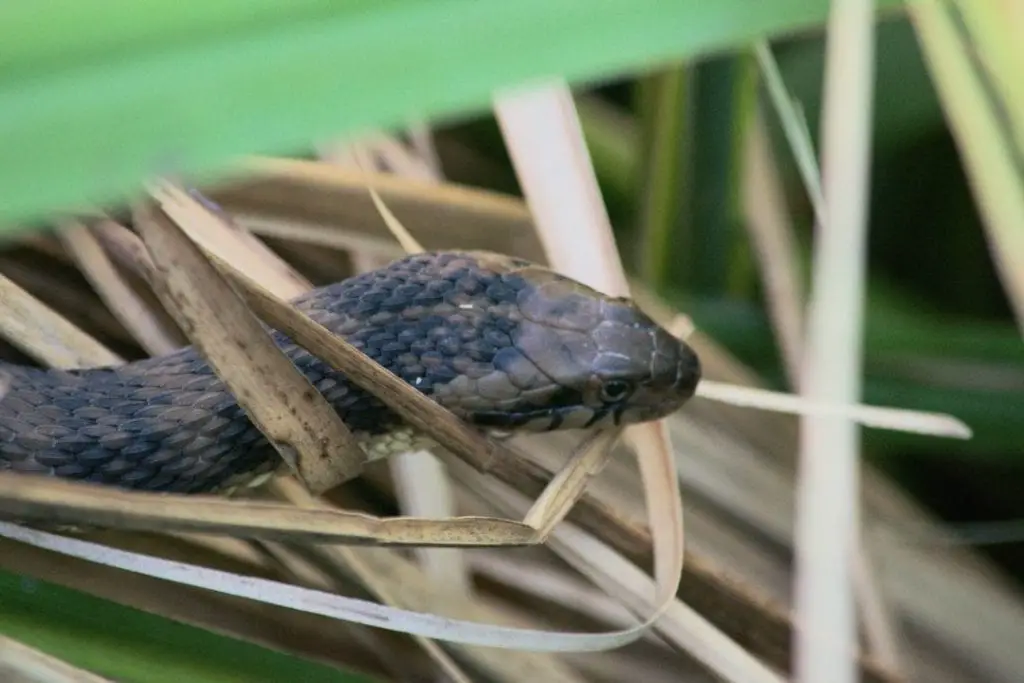
The green water snake (Nerodia cyclopion) is another water snake species that can be found in eastern Texas.
They live in permanent bodies of water with little current and plenty of vegetation.
Like other members of the genus, they hunt fish, crayfish, and amphibians. They are typically nocturnal and defend themselves from predators by producing a foul-smelling musk. Green water snakes are a greenish color that is typically dark in adults.
10. Common Water Snake
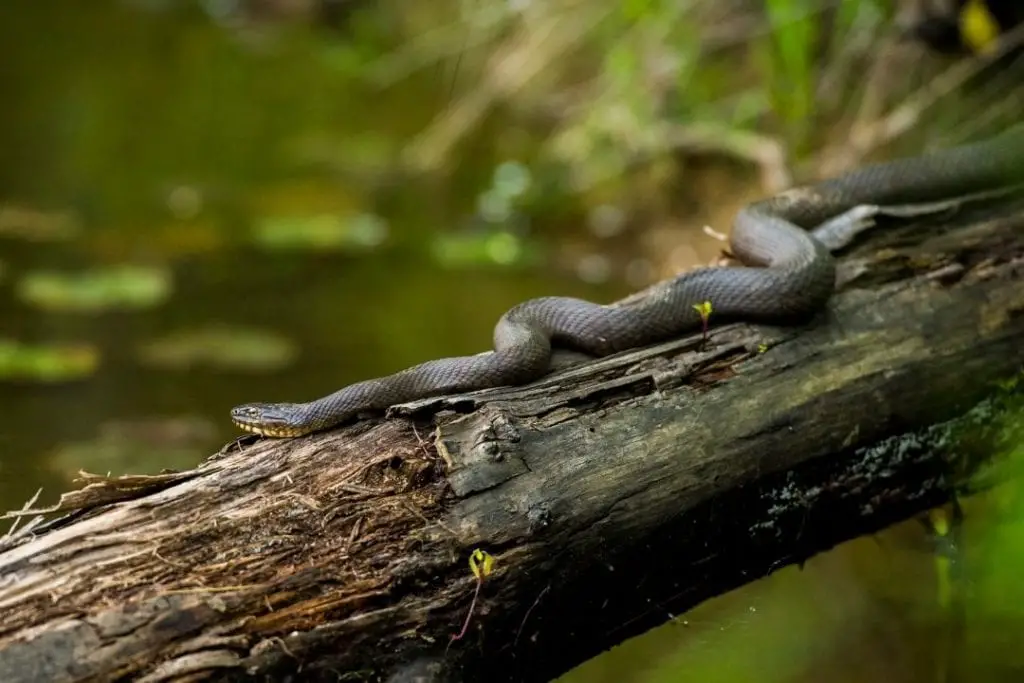
The common water snake (Nerodia sipedon) is another water snake found in Texas. This species has a wide range and is frequently mistaken for the cottonmouth.
They can be found mainly in central Texas but may be sighted in other areas.
They typically stay near water and eat aquatic prey, but they will include other prey types such as small birds.
They will also occasionally hunt outside of the water on dry land. Most will be a shade of brown, but the exact appearance will depend on the location.
11. Texas Garter Snake
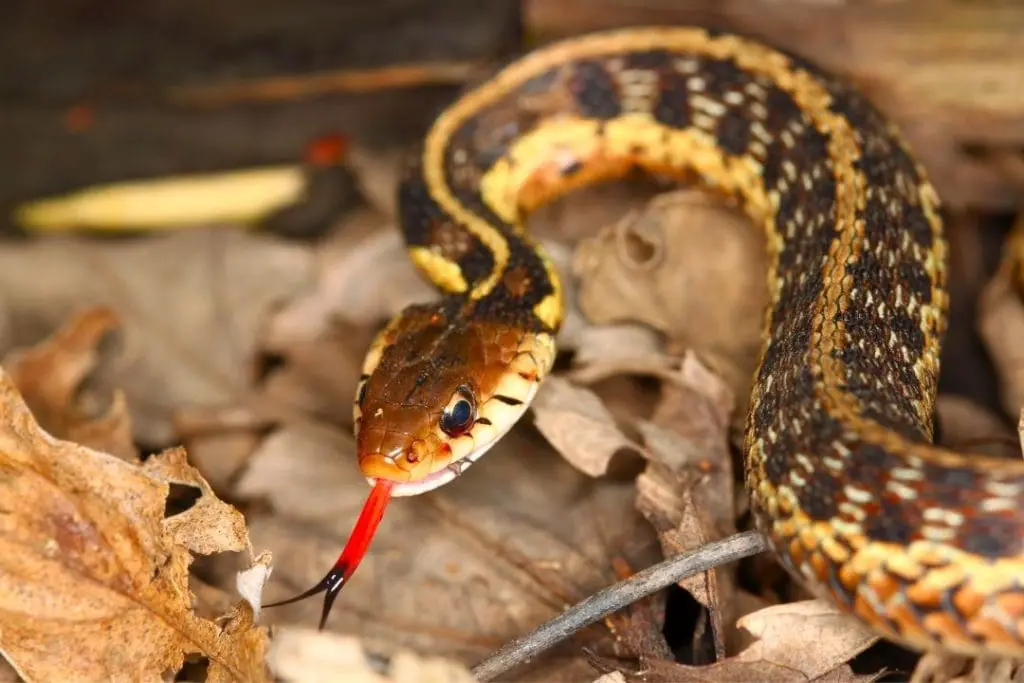
The Texas garter snake (Thamnophis sirtalis annectens) is a subspecies of the common garter snake.
They are typically found near bodies of water. They can be found primarily in central Texas. Like other garter snakes, they eat primarily small aquatic or semi-aquatic prey.
These small snakes are harmless and typically flee into the water or brush if they are confronted by a human. Like other garter snake, they have light stripes that go down the body. The background color of the snake is typically dark.
12. Texas Indigo Snake
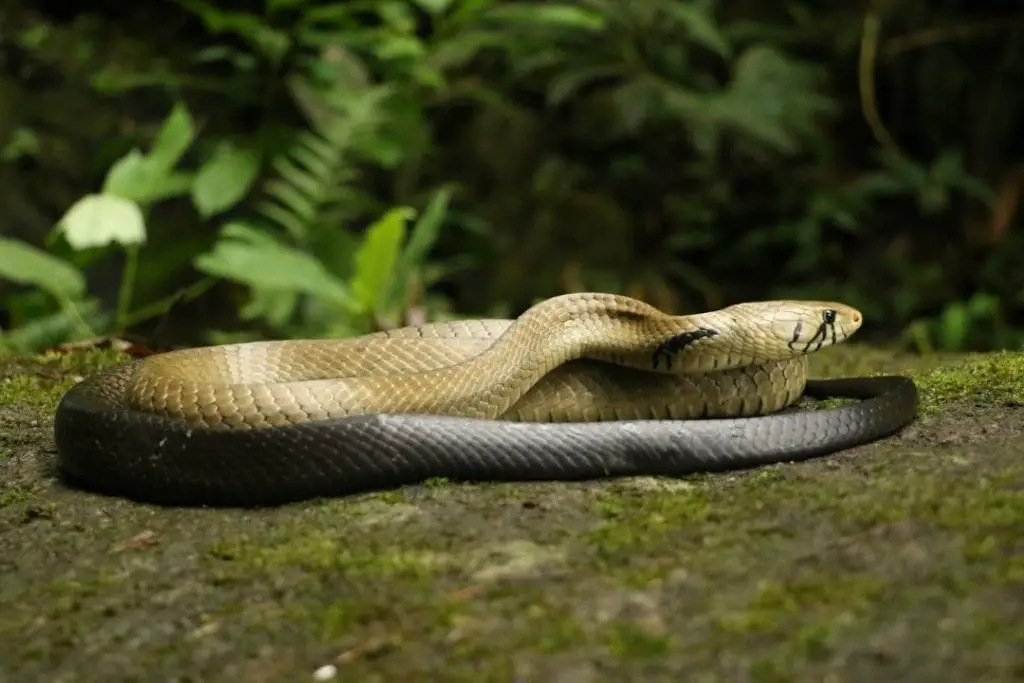
The Texas indigo snake (Drymarchon melanurus erebennus) is a dark colored snake from Texas.
These are typically somewhat large animals since they can grow to be over 5 feet long. They are not venomous and prefer habitats of dry grassland that border bodies of water.
They can occasionally be found away from water but this is rare. They live in southern Texas but their range extends into Mexico.
They primarily eat small mammals, snakes, amphibians, and lizards.
Conclusion
We hope this list has helped teach you about the many species of snakes that live near water in Texas. You may occasionally see other species near water, but these are the most common.
If you see a wild snake that you can’t identify, be sure to give it space. Even if the species is harmless wildlife should be left alone.
Never approach an unknown animal.
If you find an injured snake, call your local wildlife authority to ask what to do. If you have any questions or comments, please leave them below.
